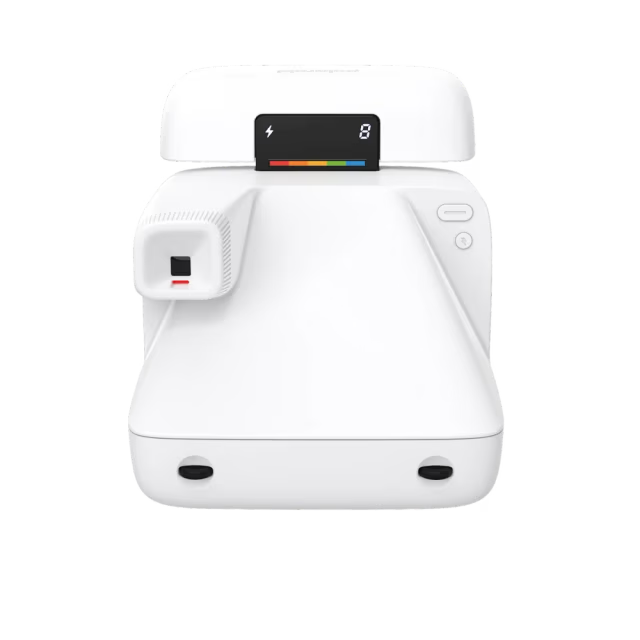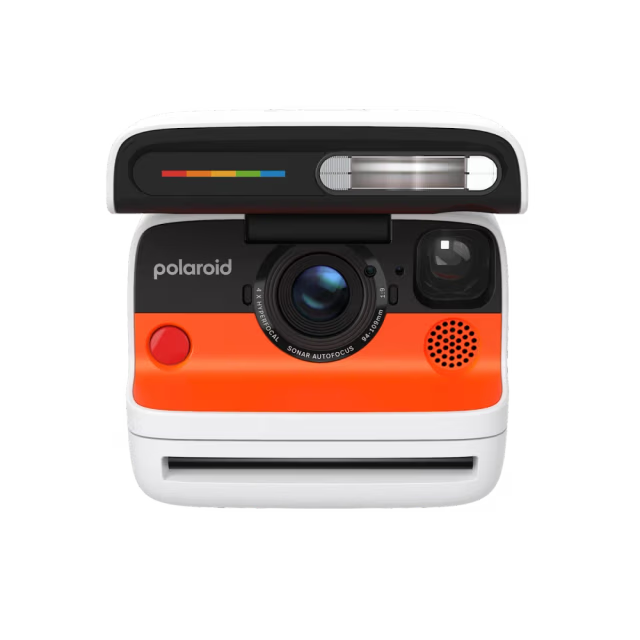A Quiet Rebellion in a Noisy Digital Era
In the age of endless scrolls, curated feeds, and algorithm-driven content, the act of slowing down to make a photograph — rather than just take one — feels almost revolutionary. The resurgence of instant film cameras, particularly the Polaroid Flip, is not simply a nostalgic throwback; it is a cultural recalibration. It signals a renewed desire to create something physical, something you can hold, frame, pin to a wall, or give away — a photograph not just as an image, but as an experience.

While smartphones have become nearly omnipotent tools in photography, they have also removed some of its soul. Photos are often taken mindlessly and forgotten quickly, lost in the abyss of digital archives. The Polaroid Flip challenges this by demanding presence and patience. It restores a sense of ritual to the act of photographing — a conscious pause that elevates both the moment and the memory.
What Is the Polaroid Flip?
The Polaroid Flip is a contemporary reimagining of the instant camera, blending mid-century industrial charm with the conveniences of 21st-century technology. At first glance, it’s unmistakably Polaroid — minimalist, playful, and robust — but a closer look reveals thoughtful innovations that make it much more than a novelty.
✦ Design and Build
The Flip retains the boxy silhouette and iconic simplicity that defined classic Polaroid cameras, but refines the proportions for modern sensibilities. It features a tactile matte finish available in a muted color palette — charcoal, bone white, sage green — appealing to a design-conscious audience. The flip-out viewfinder, its most distinguishing feature, is both a functional tool and an aesthetic flourish. It nods to vintage camcorder styling while enhancing the photographic process by requiring a moment of framing and reflection.
✦ Core Features
- Instant Print Technology with i-Type Film: Compatible with Polaroid’s latest film stock, the Flip delivers sharper, more color-accurate prints while still retaining the signature softness and tonal quirks of traditional Polaroid images.
- Rechargeable USB-C Battery: A sustainability-forward feature, eliminating the need for disposable batteries — a welcome update for eco-conscious consumers.
- Analog Simplicity with Digital Augmentation: Through the Polaroid companion app, users can access creative tools like double exposures, remote shutter activation, and light painting, all while maintaining the camera’s analog-first philosophy.
- Deliberate User Experience: There’s no screen, no preview, and no chance to delete. Each shot is a commitment — and therein lies its beauty.
Why Are Instant Cameras Popular Again?
To understand the resurgence of instant cameras, one must look beyond technology and into the deeper emotional and sociocultural landscape. This revival is less about the camera itself and more about what it represents: intention, memory, tactility, and the embrace of imperfection in an era obsessed with flawless digital facades.
✦ Cultural Drivers Behind the Analog Revival
| Phenomenon | Explanation |
|---|---|
| Tactile Memory-Making | Analog prints serve as physical artifacts of personal history. They possess weight, texture, and permanence that pixels simply cannot match. |
| Digital Burnout | With constant connectivity comes fatigue. Analog tools like the Polaroid Flip offer a meditative counterbalance to the overstimulation of modern tech. |
| Imperfect Aestheticism | In contrast to the artificial perfection of filtered images, instant photos embrace unpredictability — a refreshing visual honesty. |
| Millennial & Gen Z Nostalgia | Younger generations are increasingly drawn to retro technologies, not only for their aesthetics but for the authenticity they represent. |
| Mindfulness Through Medium | Shooting with an instant camera requires forethought — each frame is finite, urging photographers to be present and intentional. |
Polaroid Flip in Context: Comparing Fujifilm Instax and Kodak Printomatic
While Polaroid might be the emotional favorite, the instant camera landscape is shared with two prominent contenders: Fujifilm’s Instax series and Kodak’s Printomatic line. Each serves a distinct audience, and understanding their differences sheds light on the Polaroid Flip’s unique appeal.
✦ Fujifilm Instax: The Fun-Loving Standard
The Instax lineup is known for its cheerful colors, compact forms, and vibrant photo quality. It dominates the entry-level instant camera market with affordable film and a wide variety of styles — Mini, Square, and Wide formats.
Strengths:
- Broad accessibility and a playful aesthetic.
- Consistent print quality with excellent exposure balance.
- A reliable option for parties, casual use, and younger users.
Drawbacks:
- Designs can feel toy-like or overly juvenile for mature users.
- Minimal creative control or artistic flexibility.
- No integration with apps or digital workflows.
✦ Kodak Printomatic: Bare-Bones Utility
Kodak’s Printomatic is positioned as a budget-friendly, ultra-portable option that prints using Zink paper — a zero-ink technology that produces sticker-like images instantly.
Strengths:
- Extremely affordable and beginner-friendly.
- Integrated printing with no separate development process.
- Lightweight and easy to carry.
Drawbacks:
- Subpar image quality lacking depth and richness.
- No artistic or manual controls.
- Zink prints lack the textured, chemical-based charm of true instant film.
✦ The Polaroid Flip’s Place in the Ecosystem
The Flip resides in a more contemplative, design-minded tier. It’s not for rapid-fire snapshots but for curated, meaningful moments. Unlike its competitors, it invites users into a slower, more immersive relationship with photography — one where each frame is crafted, not captured in haste.
Pros and Cons: Is the Polaroid Flip for You?
✅ Advantages
- Emotionally Resonant Photography: Every shot is a memento, not a megabyte.
- Modern Yet Respectful of Heritage: A seamless fusion of classic design and current technology.
- Ideal for Creative Exploration: Optional app integration enables deeper experimentation.
- Aesthetic Object: The camera is as much a conversation piece as it is a tool.
❌ Limitations
- Film Cost: At around $2 per exposure, it may not suit high-volume shooters.
- Limited Controls: Lacks the granular adjustability found in digital cameras or DSLRs.
- Learning Curve for Digital Natives: Those accustomed to digital previews may need time to adapt to its analog discipline.
Final Reflections: Photography as Presence, Not Performance
The Polaroid Flip doesn’t seek to replace your phone. It’s not here to compete with megapixels or editing apps. Instead, it reintroduces the idea that photography can be slow, intimate, and imperfect — and in doing so, more profoundly human.
This camera is for those who find beauty in unpredictability, who understand that a photo’s worth isn’t measured in likes but in laughter, in shared glances, in the rustle of a freshly-developed print passed from hand to hand. It’s for creatives, romantics, minimalists, and those hungry for moments that aren’t instantly swiped away.
In an era that moves at the speed of data, the Polaroid Flip asks you to pause. To frame the scene. To press the shutter with intention. And to wait — just a little — for something real to develop.



